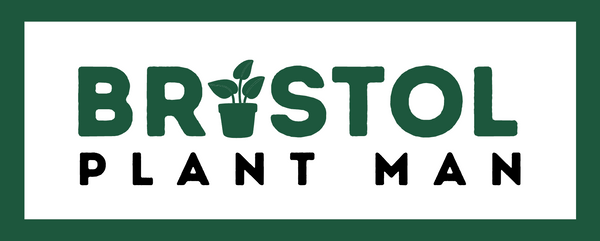How to Care for Your 40cm Hanging Hoya Tricolor
The Hoya, also known as the "Wax Plant," is a charming and low-maintenance houseplant known for its waxy, fragrant flowers and attractive trailing vines. With its ability to thrive in a range of conditions, it makes an excellent choice for both beginners and seasoned plant parents. Here’s everything you need to know about caring for your Hoya plant.
General Care
Hoya plants are relatively easy to care for, but they do have some specific needs to keep them healthy. These plants prefer bright, indirect light, minimal watering, and well-drained soil. Once established, they grow slowly and will reward you with beautiful flowers and lush foliage.
- Soil: Well-draining, slightly acidic soil is ideal for Hoya plants. A cactus or succulent mix with added perlite or orchid bark works well.
- Potting: Choose a pot with drainage holes to prevent water from accumulating at the bottom, which could lead to root rot.
- Humidity: Hoya plants prefer moderate to high humidity (50-60% or more). If your home is dry, especially in winter, a humidifier or a tray of water near the plant will help.
- Temperature: Keep your Hoya in a warm environment, ideally between 60-80°F (15-27°C). They are sensitive to cold drafts and temperatures below 50°F (10°C).
Lighting
Hoya plants thrive in bright, indirect light but can tolerate some direct sunlight. Too much direct light can scorch the leaves, but insufficient light can slow their growth and reduce flowering.
- Bright, Indirect Light: Place your Hoya near a window with filtered sunlight (e.g., behind a sheer curtain or in a well-lit room).
- Low Light: While Hoya plants can tolerate low light, they will grow slower and may not flower. If your plant is not blooming, it may need more light.
- Avoid Direct Sun: Hoya plants can tolerate a few hours of direct morning sunlight, but too much midday sun can scorch the leaves, leading to brown spots or crispy edges.
Watering
Hoya plants are drought-tolerant and prefer to dry out between waterings. Overwatering is a common mistake, so it’s essential to allow the soil to dry completely before watering again.
- When to Water: Water when the top 1-2 inches (2.5-5 cm) of soil feel dry to the touch. Avoid watering if the soil is still moist, as this can cause root rot.
- Watering Technique: Water thoroughly until water starts to drain out of the bottom of the pot. Ensure the excess water drains away and doesn’t collect in the saucer.
- Frequency: In warmer months (spring and summer), water once every 7-10 days. In the winter, you can reduce watering frequency, as the plant’s growth slows.
- Signs of Overwatering: Yellowing leaves, moldy or soggy soil, a musty smell.
- Signs of Underwatering: Wrinkled or shriveled leaves, dry and brittle stems.
Fertilizing
Hoya plants are relatively light feeders, but providing them with nutrients during their growing season will encourage healthy growth and occasional flowering.
- Type: Use a balanced, water-soluble fertilizer (e.g., 10-10-10) diluted to half strength.
- How Often: Fertilize every 4-6 weeks during the growing season (spring and summer). In the fall and winter, reduce or stop fertilizing since the plant is not actively growing.
- Organic Options: You can use organic fertilizers such as fish emulsion or worm castings for a gentler, steady release of nutrients.
Pruning and Training
Hoya plants don’t need much pruning, but removing dead or yellowing leaves can keep the plant looking tidy. Regular pruning can also encourage new growth and help maintain the plant’s shape.
- Pruning: Trim dead or yellowing leaves and stems to keep your Hoya looking healthy. Use clean, sharp scissors to avoid damaging the plant.
- Training: Hoya plants are natural climbers and will benefit from a support structure like a trellis or moss pole. You can also let them trail freely from hanging baskets.
Propagation
Hoya plants are easy to propagate from cuttings, making it a fun way to grow new plants for yourself or friends.
- Choose a Healthy Stem: Select a stem with a few healthy leaves and a node (a small bump on the stem where roots will form).
- Cut the Stem: Use a clean, sharp knife or scissors to cut just below the node.
- Rooting: Place the cutting in water or in moist soil. If rooting in water, change the water every few days until the roots are a few inches long.
- Planting: Once the roots have developed, plant the cutting in a small pot with well-draining soil. Keep the plant in a warm, bright location with indirect light to encourage growth.
Common Issues and Troubleshooting
- Yellow Leaves: Overwatering is a common cause. If the plant is sitting in waterlogged soil for too long, it can lead to root rot.
- Leaf Drop: This could be caused by environmental stress, such as sudden temperature changes or insufficient light.
- Pests: While Hoya plants are relatively pest-resistant, they can occasionally be affected by aphids, mealybugs, or spider mites. Inspect your plant regularly and treat with insecticidal soap or neem oil if necessary.
Conclusion
With the right care, your Hoya plant can thrive and become a beautiful, fragrant addition to your home. These plants are low-maintenance, hardy, and will reward you with stunning blooms and lush foliage. Whether you’re a beginner or an experienced plant parent, Hoyas are a fantastic choice that will add charm and elegance to your space.








